K53 Regulatory Signs
Regulatory road signs play a crucial role in maintaining order and safety on South African roads. These signs inform drivers of traffic laws and regulations that must be obeyed. Understanding these signs is essential for safe driving and passing your K53 learner's license test.
Common Regulatory Signs in South Africa

Give Way (Yield) to Pedestrians and Equestrians
Drivers must yield to both pedestrians and horse riders crossing the road.
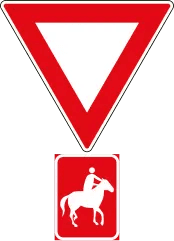
Give Way (Yield) to Equestrians
Drivers must yield to horse riders crossing the road.
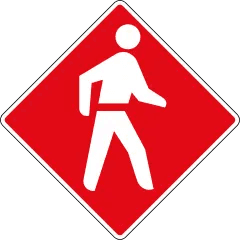
Pedestrian Priority Sign: Meaning, Rules, and Where It’s Used
A pedestrian priority sign marks an area where pedestrians have the legal right-of-way over vehicles.
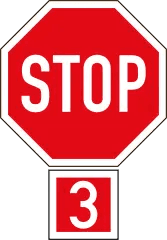
3-Way Stop Sign: Rules, Right-of-Way, and How to Navigate Safely
A 3-way stop sign regulates traffic at T-intersections where three roads meet. All drivers must come to a complete stop, but right-of-way rules differ slightly from 4-way stops.
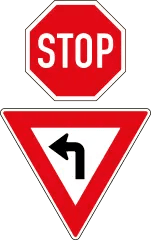
Stop, But Drivers Turning Left Must Give Way (Yield)
Drivers must stop, and those turning left must also yield to other traffic.

Stop
Requires drivers to come to a complete stop before proceeding.
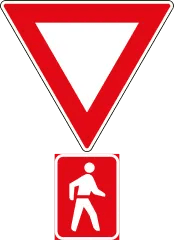
Give Way: Yield to Pedestrians
Drivers must yield to pedestrians crossing the road.
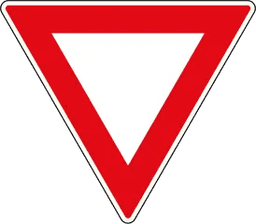
Give Way (Yield)
Drivers must yield to traffic on the intersecting roadway.
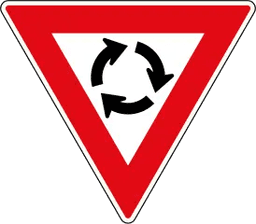
Give Way (Yield) at Roundabout
Drivers must yield to traffic already in the roundabout.
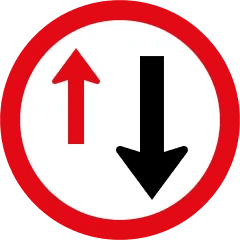
Give Way (Yield) to Oncoming Traffic
Drivers must yield to vehicles coming from the opposite direction.
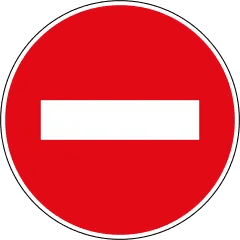
No Entry Road Sign: Meaning and Rules
Prohibits entry of all vehicles.
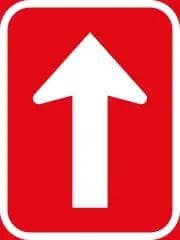
One-Way Roadway
A one-way roadway is a street where traffic flows in a single direction, marked by a one-way road sign.
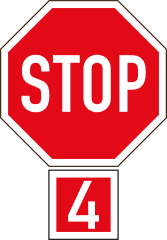
4-Way Stop Sign: Meaning and Rules
Indicates a four-way stop intersection where all vehicles must stop.
Understanding Regulatory Road Signs
Regulatory road signs are used to inform road users of traffic laws and regulations. They indicate what drivers must or must not do, and failure to comply with these signs is typically a legal offense. These signs are designed to be clear and easily recognizable, often featuring distinctive shapes and colors. Key features of regulatory road signs include:
- Circular shape for most prohibitory signs
- Red circles or borders for prohibitions
- Blue circles for positive instructions
- Distinctive octagonal shape for stop signs
- Use of symbols and text to convey specific rules
Regulatory signs are legally enforceable, and drivers must obey them at all times unless directed otherwise by a traffic officer.
Importance of Regulatory Road Signs in South African Driving
Regulatory road signs are vital for several reasons:
- Maintaining Order: They help create a standardized system of rules that all road users can follow, reducing confusion and potential conflicts.
- Enhancing Safety: By clearly communicating rules and restrictions, these signs help prevent accidents and keep all road users safe.
- Legal Compliance: Understanding and obeying these signs is not just a matter of safety, but also a legal requirement for all drivers.
- Traffic Flow: Many regulatory signs help manage traffic flow, reducing congestion and improving overall efficiency on the roads.
- Pedestrian Protection: Some regulatory signs are specifically designed to protect pedestrians and other vulnerable road users.
Mastering regulatory road signs is crucial for passing your K53 test and becoming a responsible driver on South African roads. These signs form the backbone of traffic law knowledge that every driver must possess.
Tips for Recognizing and Responding to Regulatory Road Signs
- Pay attention to the shape and color of signs: circular signs with red borders indicate prohibitions, while blue circles typically give positive instructions.
- Always obey stop signs: come to a complete stop, check for traffic, and proceed only when safe.
- Be aware of speed limit signs and adjust your speed accordingly.
- Look out for signs indicating lane usage, such as turn restrictions or dedicated lanes.
- Be particularly alert for regulatory signs in urban areas where rules may change frequently.
- Remember that some regulatory signs may be time-specific, applying only during certain hours or days.
- Practice identifying these signs regularly using the K53 Learners App to improve your recognition speed and accuracy.
Frequently Asked Questions about Regulatory Road Signs
What's the difference between regulatory and warning signs?
Regulatory signs give instructions that must be obeyed, such as speed limits or no-entry rules. Warning signs, on the other hand, alert drivers to potential hazards ahead but don't mandate specific actions. Regulatory signs are often circular with red borders, while warning signs are typically triangular.
Are all circular signs regulatory?
Most circular signs are regulatory, but not all. Circular signs with red borders are typically prohibitory (telling you what you must not do), while those with blue backgrounds usually give positive instructions (telling you what you must do).
What should I do if I see a regulatory sign that seems to conflict with the current road situation?
Always obey regulatory signs unless directed otherwise by a traffic officer. If you frequently notice a sign that seems inappropriate for its location, you can report it to your local traffic department for review.